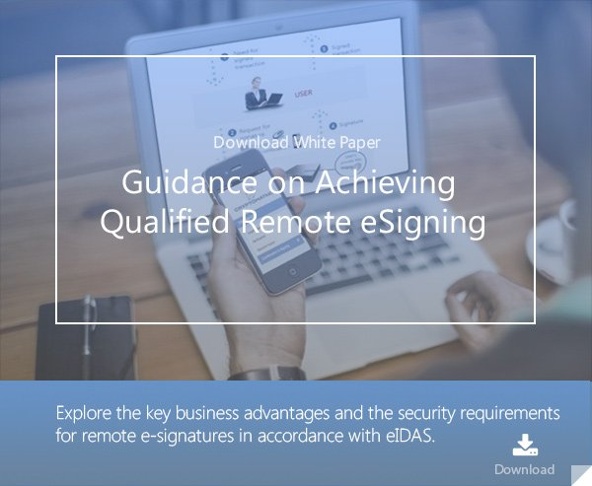
In a recent article, we looked at how eIDAS can help SMEs grow and prosper. SMEs are undoubtedly the lifeblood of any economy which means that EU initiatives must cater to their specific needs. The previous article looked at how eIDAS can address the security needs of SMEs while reducing their regulatory burden and allowing them to focus on their core competencies.
However, SMEs have a unique set of challenges as well. Today, we look at some of the challenges unique to SMEs and how those challenges may be overcome to ensure that SMEs can benefit from eIDAS enabled tools to the maximum extent possible.
Challenge 1: Awareness and technical capabilities.
The majority of businesses in the EU are small operations with less than 10 people and they don’t often have an IT department. Implementing technically complicated solutions might become difficult or cost ineffective in such setups.
Solution
 The first part of the solution is to spread awareness about what eIDAS enabled tools can do for SMEs in the first place. Unless the business owners know specifically how eSignature or eTimeStamp, for example, can help their business in a tangible way, they might not be interested in implementing the solution. Various EU organisations are already working to spread awareness through infographics, explanatory videos and other such tools. But a bigger impact is likely to come from other commercial partners of these SMEs.
The first part of the solution is to spread awareness about what eIDAS enabled tools can do for SMEs in the first place. Unless the business owners know specifically how eSignature or eTimeStamp, for example, can help their business in a tangible way, they might not be interested in implementing the solution. Various EU organisations are already working to spread awareness through infographics, explanatory videos and other such tools. But a bigger impact is likely to come from other commercial partners of these SMEs.
For example, their bank might introduce them to a particular eIDAS enabled solution for their business. Or maybe one of their larger merchandise suppliers might want to on-board them on a supply chain tool that uses something like eSignature or Electronic Registered Delivery Service.
The second part of the solution is providing technical training. Once the positive impact of a particular solution has been made clear, it would become easier to motivate SMEs to invest the necessary resources to implement it and undergo training. In the medium to long term, the investment would likely pay for itself several times over.
Challenge 2: Businesses are diverse.
Organisations differ significantly in terms of size, structure and technical capabilities and, in the case of the EU, additional cultural or language barriers exist as well.
Solution:
In order to reach SMEs anywhere, it is essential to adopt a more local approach. While cross border improvements might be good for certain businesses, many operate locally only. So, it becomes important to address each business based on its specific circumstance. A good way to do this is through a network of networks approach. Rather than information being disseminated form one central location, local hubs need to be created which can help SMEs locally with the necessary information.
This network of hubs essentially creates a local network further downstream. And each of these hubs would be more aware about the local requirements. Hubs don’t have to be EU bodies - they can be private companies which themselves can benefit operationally by ensuring their local counterparts are using the best tools. For example, an automobile manufacturer which sources components from dozens of local small vendors can provide them with the relevant training.
What lies ahead…
There are many more challenges that lie ahead for successful adoption of various eIDAS enabled tools by SMEs. But such challenges always exist whenever a paradigm shift is being brought about. We will keep highlighting more challenges in future articles and how SMEs can power through them. Ultimately though, it is the business owners who have to decide how to make the best use of all the tools that are not only available to them, but have been designed keeping them in mind.
References and Further Reading
- Digital Trade and Trade Financing - Embracing and Shaping the Transformation (2018), by SWIFT & OPUS Advisory Services International Inc
- REGULATION (EU) No 1316/2013 establishing the Connecting Europe Facility, amending Regulation (EU) No 913/2010 and repealing Regulations (EC) No 680/2007 and (EC) No 67/2010(12/2013), by the European Parliament and the European Council
- Selected articles on Electronic Signing and Digital Signatures (2014-today), by Ashiq JA, Gaurav Sharma, Guillaume Forget, Jan Kjaersgaard , Peter Landrock, Torben Pedersen, Dawn M. Turner, and more
- Selected articles on Authentication (2014-today), by Heather Walker, Luis Balbas, Guillaume Forget, Jan Kjaersgaard, Dawn M. Turner and more
- eIDAS webinar 1: Using electronic Identification, Authentication and trust Services for Business (2018), by the European Commission
- The European Interoperability Framework - Implementation Strategy (2017), by the European Commission
- Proposal for a DIRECTIVE OF THE EUROPEAN PARLIAMENT AND OF THE COUNCIL amending Directive (EU) 2015/849 on the prevention of the use of the financial system for the purposes of money laundering or terrorist financing (2016), by the European Commission
- REGULATION (EU) 2016/679 on the protection of natural persons with regard to the processing of personal data and on the free movement of such data, and repealing Directive 95/46/EC (General Data Protection Regulation) (2016), by the European Parliament and the European Council
-
Proposal for a REGULATION concerning the respect for private life and the protection of personal data in electronic communications and repealing Directive 2002/58/EC (Regulation on Privacy and Electronic Communications), (2017), by the European Parliament and the European Council
- Revised Directive 2015/2366 on Payment Services (commonly known as PSD2) (2015), by the European Parliament and the Council of the European Union
- REGULATION (EU) No 910/2014 on electronic identification and trust services for electronic transactions in the internal market and repealing Directive 1999/93/EC (2014) by the European Parliament and the European Commission
-
DIRECTIVE 2013/37/EU amending Directive 2003/98/EC on the re-use of public sector information (2013) by the European Parliament and the Council
